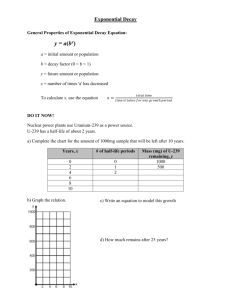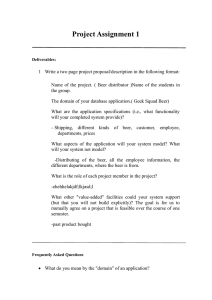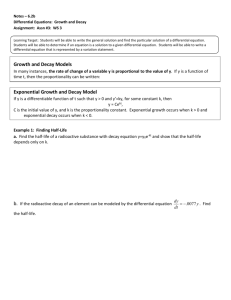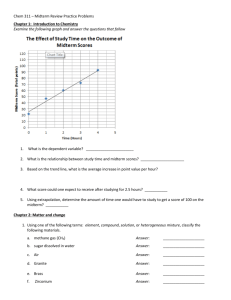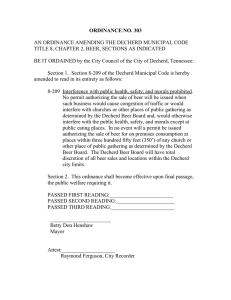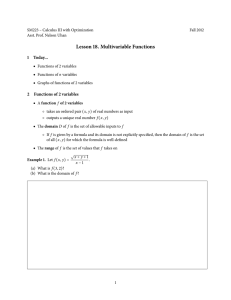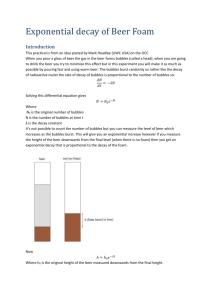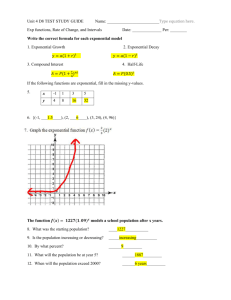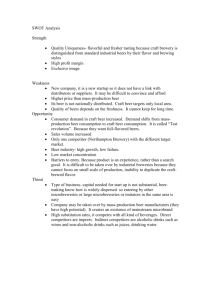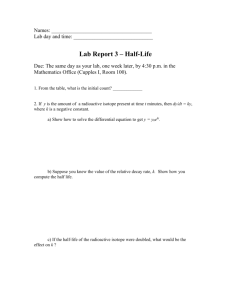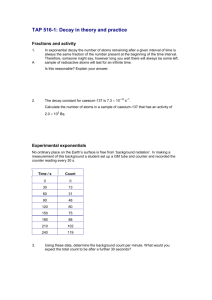The beer experiment
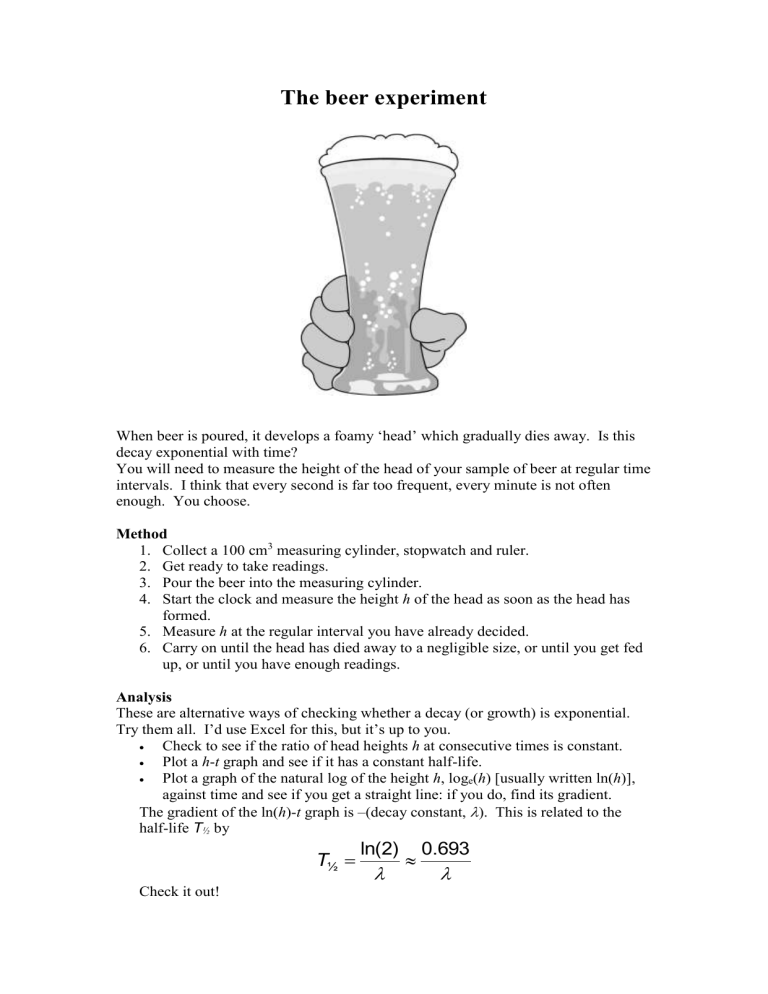
The beer experiment
When beer is poured, it develops a foamy ‘head’ which gradually dies away. Is this decay exponential with time?
You will need to measure the height of the head of your sample of beer at regular time intervals. I think that every second is far too frequent, every minute is not often enough. You choose.
Method
1.
Collect a 100 cm
3
measuring cylinder, stopwatch and ruler.
2.
Get ready to take readings.
3.
Pour the beer into the measuring cylinder.
4.
Start the clock and measure the height h of the head as soon as the head has formed.
5.
Measure h at the regular interval you have already decided.
6.
Carry on until the head has died away to a negligible size, or until you get fed up, or until you have enough readings.
Analysis
These are alternative ways of checking whether a decay (or growth) is exponential.
Try them all. I’d use Excel for this, but it’s up to you.
Check to see if the ratio of head heights h at consecutive times is constant.
Plot a h t graph and see if it has a constant half-life.
Plot a graph of the natural log of the height h , log e
( h ) [usually written ln( h )], against time and see if you get a straight line: if you do, find its gradient.
The gradient of the ln( h )t graph is –(decay constant,
). This is related to the half-life T
½ by
T
½
ln(2)
0 .
693
Check it out!
